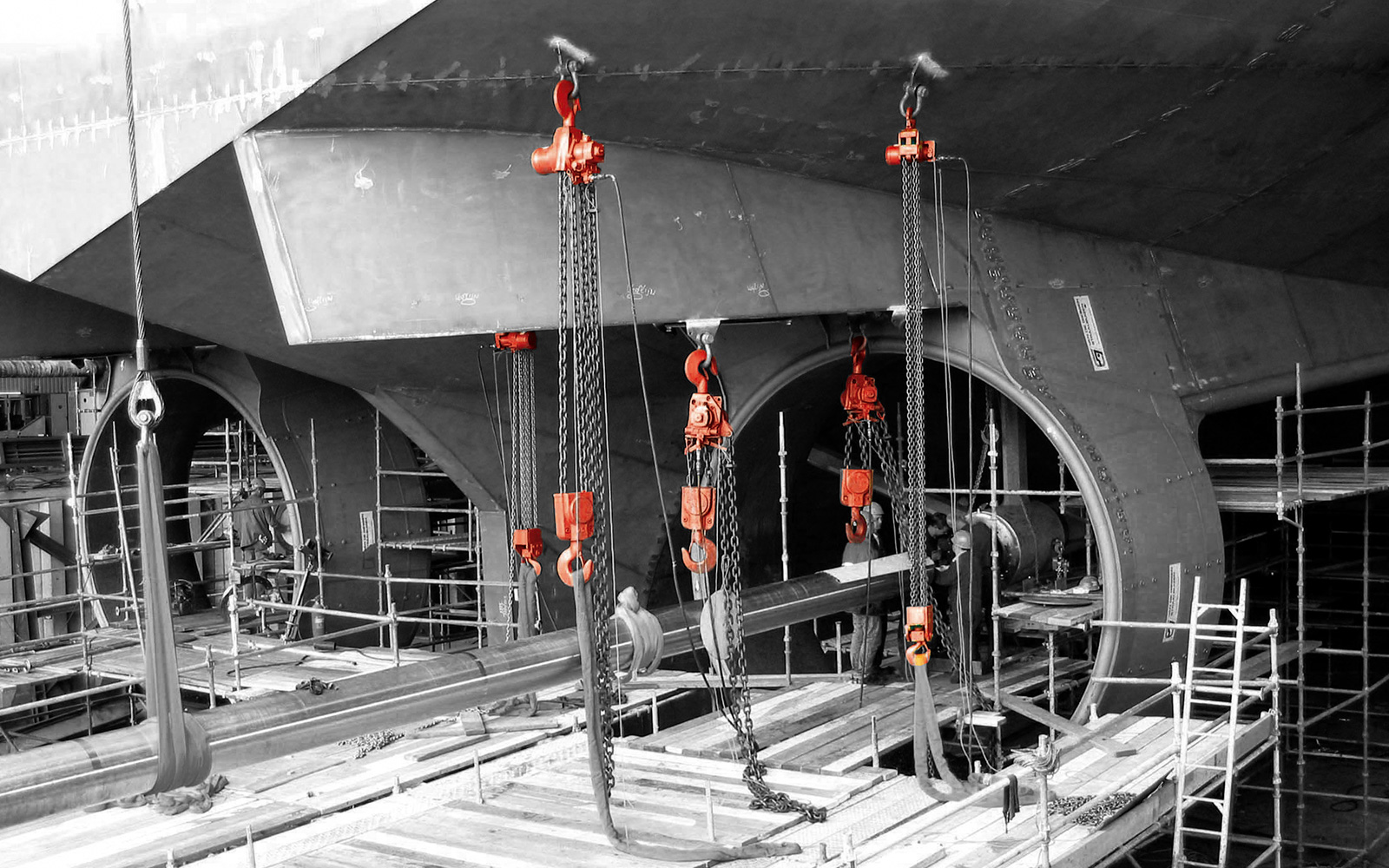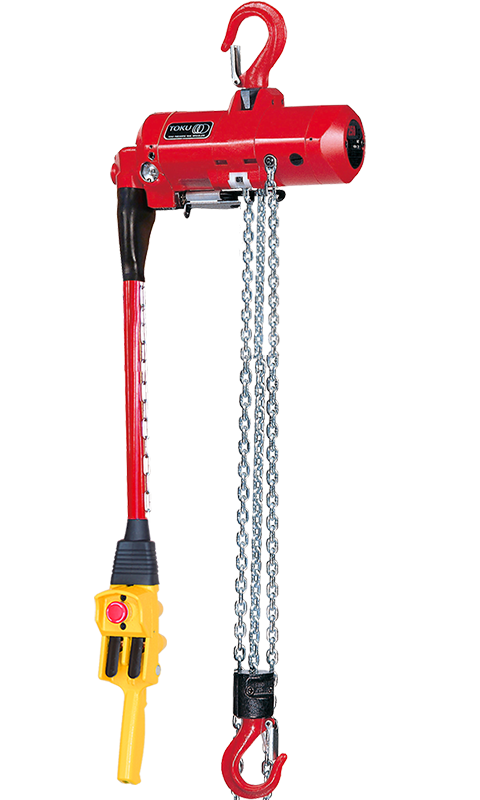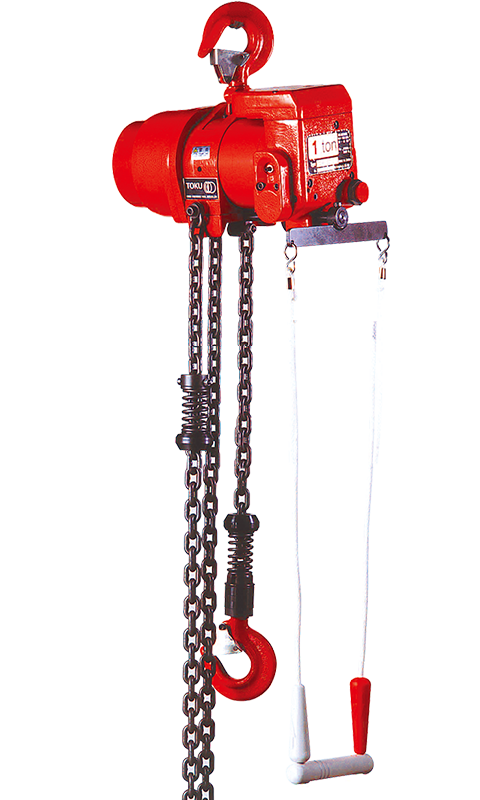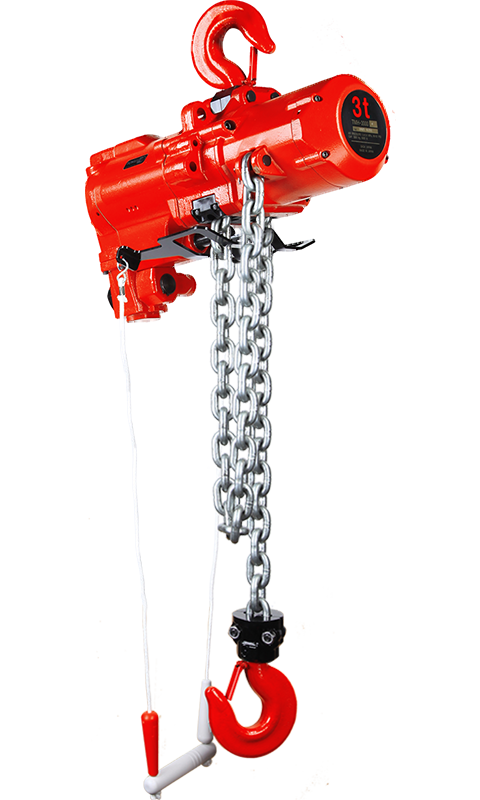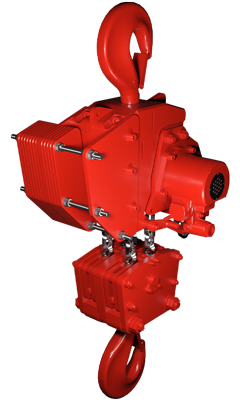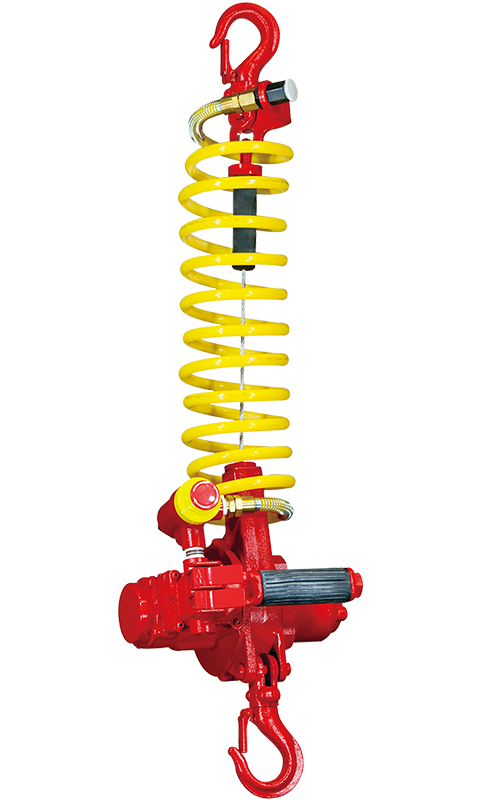Maintenance & Inspection for Air Hoist
Inspect the air hoist regularly
To operate the hoist safely, it is necessary to obey the crane safety regulations and perform daily inspections, monthly inspections and annual inspections.
If the hoist is not inspected on regular basis this may lead to damage to the hoist and result in personal injury.
Daily Inspection
- Inspection of the air pressure and oil
- Inspect the hook and hook claw;
- Is the chain lubricated
- Does the hoist operate smoothly without abnormal sounds?
Confirm the hoist is operating at 0.6MPa (6kg/cm2) air pressure. Also make sure the line oiler is operating correctly. If oil lacks to the motor, this will lead to early wear of the motor parts.
If the hook is unable to rotate the chain may become twisted and the load may rotate leading to danger. Also make sure the safety hook is working correctly or it will be very dangerous.
The chain may wear prematurely if it is not lubricated properly.
Stop the hoist if you hear any abnormal sounds coming when the hoist is operating.
Monthly Inspection
- Inspection of the chain (For damage and elongation)
- Check if the brake is operating correctly
- Inspection of the hook
- Inspect for loose bolts and nuts
- Inspect the lifting limiter
Inspect the chain according to the maintenance manual. If the chain is out of tolerance, stop operation and replace the chain. This may lead to breakage and is dangerous.
Check the operation of the brake. If the load slips contact your dealer or distribution for repair. It is dangerous to continue the use of the hoist in these conditions.
Inspect the hook for damage, deformation, non-rotation and also conform the safety claw operates properly. Concerning the shape of the hook, review the maintenance chart for dimensions (L) and (H). If these areas exceed the recommended amount, it is dangerous to use. Replace with a new one.
It is dangerous to use the hoist with loose bolts or nuts. And this may cause damage to the other areas of the hoist.
Check to make sure the lifting limiter is functioning and stops correctly. Check this function with no load.
Annual Inspection (without disassemble)
The annual inspection should be performed once a year by the manufacturer or at authorized service location. As for the servicing, it should be performed once a year, every 500,000 cycles of operation, or 400 hours of actual operating time of the air hoist, whichever comes first. But please note, depending on the environment where the hoist is being used, it may be necessary to inspect the hoist as needed.

